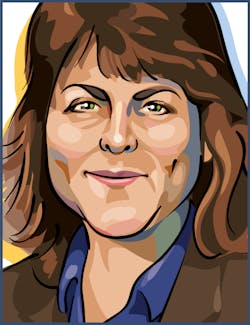
Once the morning sessions had concluded and the pre-lunch industrial laser panel and lunchtime 3D printing presentation were over, I expected the conference room to empty a bit as in previous years; fortunately, that wasn't the case--more than two-thirds of the packed house at the 2015 Lasers & Photonics Marketplace Seminar (http://www.marketplaceseminar.com) on February 9 remained for the afternoon sessions--an indication that all things laser-related are hot.
Global photonics
Beginning the afternoon sessions was Tom Hausken, OSA senior advisor, engineering & applications, who gave an overview of the global market for photonics, which grows about 6% per year--outpacing the 2 to 3% average growth of the US economy. In 2015, OSA Industry Development Associates (OIDA) predicted that the production value of photonics will reach $500 billion dollars, of which less than $100 billion is actual photonics products, and about $200 billion is comprised of displays while the remaining $200 billion is comprised of products enabled by photonics production.
Geographically, Taiwan takes a large share for displays while China is responsible for most of the photovoltaics production (LEDs make up about $10 billion worth of business for China alone). China is gaining confidence in the mergers & acquisitions space while Japan's economy remains flat, says Hausken. Not to mention that Japan has nearly equivalent photonics production at home and offshore. In the US, less than 10% of the photonics companies contribute 90% of the US photonics revenue. Most of the European photonics production is in the industrial space, while Taiwan is slowly seeing a falling share of production.
Hausken concluded with many of the US initiatives for photonics funding, as well as some detail on Europe. It is hoped that these efforts will increase as photonics awareness increases globally. Currently, the US spends about $1.3 billion on photonics funding efforts.
Lasers in China
Peking University professor and VP and secretary general of the Chinese Optical Society Qihuang Gong gave an overview of how funding is structured in China for laser and photonic advances in both public and private markets. Even though China has 20% of the world's population at about 1.3 billion people, Gong says that 200 million of those are poverty stricken and that China has a long way to go in growing the middle class.
Optics-related graduate students comprise roughly 20% of the total graduates in 2000 higher-education institutes, and recent research on quantum information processing, solitons, nanophotonics, nanoscale particle detection, ultrafast light-matter interaction, and OAM communication are indicators of the sophisticated nature of Chinese academia. R&D funding has been growing exponentially in China since 1995, and a host of other slides that could not be shown due to time constraints of the presentation are available on the presentation thumb drives handed out to Seminar attendees.
Easy oil doesn't exist anymore
In his presentation entitled "Photonics in the Oil and Gas Industry", Halliburton fluid ID R&D manager Chris Jones said that even though oil prices had dropped a lot in previous months, they will once again be on the rise (as they have been recently) and that "easy oil doesn't exist anymore". Hence the need for photonics to improve recovery efficiencies for existing and new oil reserves.
An oil industry downturn is actually good news for photonics, says Jones. Many new products are launched when the oil industry is not doing well and recognizes it needs new technology to stay profitable. Among those profit-builders are downhole fiber-optic filter-based and fiber Bragg grating (FBG)-based temperature and pressure sensors that can improve oil well monitoring and serve as a barometer for well health, yielding clues that can increase extraction yields. Jones says that optics can bring a 20% ROI to oil and gas exploration and extraction.
To understand multivariate optical computing, readers should brush up on the recent Laser Focus World article at http://www.laserfocusworld.com/articles/print/volume-50/issue-08/features/photonics-applied-energy-multivariate-optical-computing-enables-accurate-harsh-environment-sensing-for-the-oil-and-gas-industry.html. Jones says that oil and gas monitoring is estimated to be a $2 billion dollar annual business, so photonics companies are wise to explore this space.
And with that, I've concluded my three-part blog on the 2015 Lasers & Photonics Marketplace Seminar. Be sure to attend next year; we've already started gathering data and formulating presentation ideas and speakers for the next big event in 2016. If you have suggestions for topics or speakers, please don't hesitate to contact me at [email protected].

Gail Overton | Senior Editor (2004-2020)
Gail has more than 30 years of engineering, marketing, product management, and editorial experience in the photonics and optical communications industry. Before joining the staff at Laser Focus World in 2004, she held many product management and product marketing roles in the fiber-optics industry, most notably at Hughes (El Segundo, CA), GTE Labs (Waltham, MA), Corning (Corning, NY), Photon Kinetics (Beaverton, OR), and Newport Corporation (Irvine, CA). During her marketing career, Gail published articles in WDM Solutions and Sensors magazine and traveled internationally to conduct product and sales training. Gail received her BS degree in physics, with an emphasis in optics, from San Diego State University in San Diego, CA in May 1986.